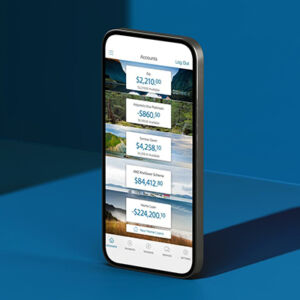Better. Stronger. Faster. Part 2.

We spend a lot of our time looking at screens, whether it’s for work, entertainment or just going about our day to day. And with this increase in screen time we’ve seen the importance of motion and digital grow dramatically across just about all industries. In this piece we’ll look into how to get the most from your motion projects, as well as what works best in the world of digital.
In part 2 of our 3-part series on getting the most out of your agency, we look into the best practices for when you're working in the ever expanding world of motion and digital. Click here to read part 1, where we went over general tips, as well as best practices for design.
Motion tips
Ask for animatics
Animatics are animated storyboards that come after the storyboard and before the animation. They only take a half hour or so to whip up. What’s more, they’ll give you a better idea of the flow and emphasis of information than a storyboard by itself can’t. And that’s important when you have an idea but don’t know how to communicate it. It’s not unusual for clients to skip the animatic stage, only to strip content when the final cut arrives, which of course leads to more expense.
Watch the clock
You’ll find statistics to support every theory on optimal video duration. But according to our partner, HubSpot, Instagram videos that get the most comments are on average 26 seconds long. And Twitter #VideoOfTheDay winners average 43 seconds. Another crowd, BuzzSumo, analysed a whole 100 million Facebook videos and worked out that anywhere between 60-90 seconds is the sweet spot for engagement. There’s no need to panic though if you have a 5-minute video in mind – just slice it into episodes.
Digital tips
Don’t rush projects
Sometimes the biggest barrier to the full rollout of a digital project is not budget but time. Trying to achieve too much in too little time can really compromise the core essence of the customer experience. Development teams end up building functionality that’s not even required. Lots of small details can slip through the cracks. And validating and testing often goes out the window. When time is not on your side, it’s best to launch with a minimum viable product and release new versions with added features in due course. If you’re too close to the project you might not be sure which is which, so ask your agency for help. Even better, ask your customers.
Reuse rather than reinvent
You want a bespoke website that doesn’t look like something straight out of WordPress’s top 10 list. But that doesn’t mean each page has to be completely unique. Much better to create building blocks for your website that can be used over and over again, on multiple page templates. Things like buttons, links, inputs, drop-downs, cards, heroes and navigation menus. This component-based approach lets your agency quickly design many screens that are easy to maintain and update with new features. Multiple designers can work on the same project at the same time because everything is clearly defined.
More developers doesn’t always mean faster development
Not if requirements start to stack. The fact is some things can only be built one after the other rather than at the same time. You could throw money at 100 developers but none of them can flesh out a page layout before the components are built, or implement page designs before a design has been approved. Charging ahead without sign-off only leads to lots of re-doing, which in turn leads to the dreaded scope creep.
Think design flow not exact line-breaks
With Firefox, Chrome, MS Edge and Safari browsers, and versions for Android, iPhone, desktop and tablet, you’re going to see some variation in a page’s exact design depending on where it’s viewed. So, copy that breaks perfectly across a line in one browser may be fractionally out on another. Start thinking of copy and design as something that flows out across the page, and enjoy giving up a little line-by-line control.
Share the knowledge
Set up a project site where you can document the key decisions and keep track of all the business details you inevitably uncover along the way. Then you’ll be able to pinpoint why and when you did something, so you don’t have to make the same decisions more than once. Put it somewhere online where everyone working on the project can see it – like a Google Doc or Notion.
Question the past
When it comes to digital projects, it’s easy to fall into the trap of ‘well it’s always been there so we better keep it’. This applies to everything from single web pages through to entire business processes. A digital refresh is a great time to clean house – your customers will most likely thank you for it, and your product will be easier to build!







